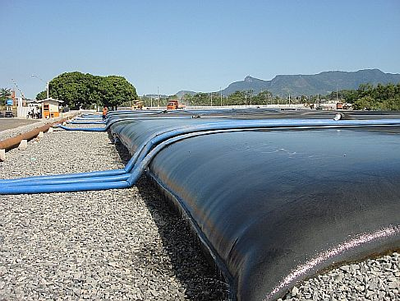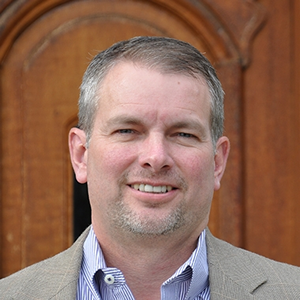 The effort to get geosynthetics specifically mentioned in the Water Resources Reform and Development Act (WRRDA) extends back many years. It began, in fact, roughly seven years ago following the passage of the last major water resource bill. The Geosynthetic Materials Association (GMA) had drafted a strategic plan in 2004 that identified a need for a stronger voice at the federal government policy level—something that would bring GMA more on par with other construction materials.
The effort to get geosynthetics specifically mentioned in the Water Resources Reform and Development Act (WRRDA) extends back many years. It began, in fact, roughly seven years ago following the passage of the last major water resource bill. The Geosynthetic Materials Association (GMA) had drafted a strategic plan in 2004 that identified a need for a stronger voice at the federal government policy level—something that would bring GMA more on par with other construction materials.
After a careful search, GMA established in 2006 ties with Washington DC-based Whitmer & Worrall/Kemp Partners for lobbying support. The association began promoting its government relations campaign.
Meanwhile, the 2007 Water Resources Development Act passed. It did not include geosynthetic-specific language, but it presented a future opportunity and became one of many issues that GMA’s members and Whitmer & Worrall took up in the following years.
An early victory came in February 2008 when former Rep. Heath Shuler (North Carolina) issued an opening statement to the House Transportation and Infrastructure Subcommittee on Water Resources and the Environment. In it, Rep. Shuler, who had a background in real estate development, encouraged the use the geosynthetics in the next water resources bill.
Though Rep. Shuler declined to run for a fourth term as North Carolina’s 11th Congressional District Representative during the 2012 election cycle, his 2008 statement to the committee on how geosynthetics were highly beneficial for infrastructure strength established a foundation that future legislative work could build upon.
The door had been opened.
TELLING THE RIGHT STORY

“The inclusion of geosynthetics in the WRRDA bill demonstrates that success in Washington DC comes from a combination of having a good story to tell and patience,” says John Henderson of Tencate Geosynthetics North America.
Henderson served as GMA’s Executive Council Chairman from 2007 – 2011 and played a key early role in the association’s government relations work.
“I can remember our early meetings with Secretary Kemp and his team where we developed the strategy to bring the story of geosynthetics to government leaders,” he says. “It was an idea that policy makers needed to know the value, both short and long-term, of geosynthetics. Like many others in the room that day, I mistakenly thought this would be a simple and quick process. It wasn’t. It took time to build relationships and trust on Capitol Hill.
“In the early days, we were fortunate if a staffer could simply pronounce ‘geosynthetics’ correctly. But as relationships developed, key leadership began to realize the benefits of innovative construction technologies such as geosynthetics.”
The collective effort and the persistence of those annual meetings in Washington, maintaining regular points of contact, and establishing stronger measures of economic value and material performance have certainly paid off. Henderson’s work as a two-term Executive Council Chairman of GMA helped pave this road. The persistence of legislative interaction has continued with Boyd Ramsey’s tenure as Chairman.
“I commend GMA for staying diligent through many years of changing government leadership and policies,” Henderson says. “This is truly a great accomplishment.”
READ MORE: Interview with Boyd Ramsey on WRRDA’s 7-Year Itch
— Chris Kelsey, Editor, Geosynthetica











